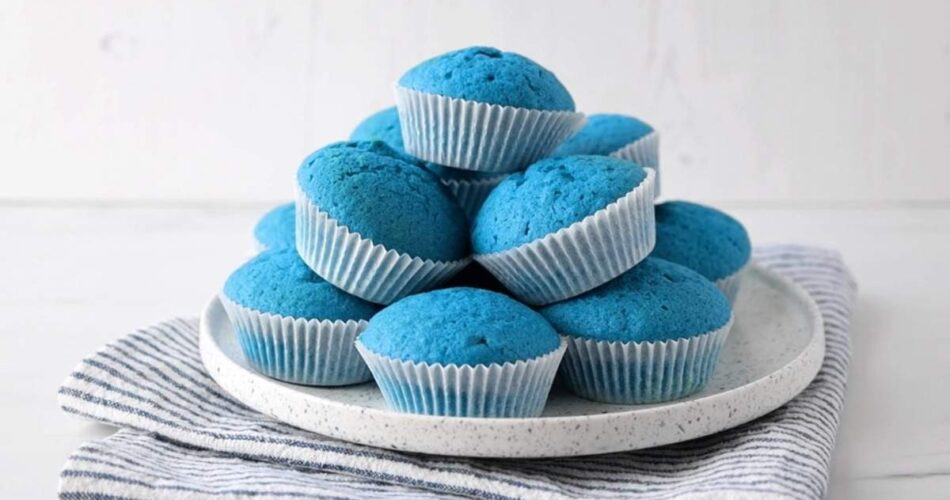A new social media challenge, this time, promoted by scientists
The latest viral challenge is not something started by the most famous influencer on social media but it all was conceived by some scientists through the ZOE website who launched the “the blue poop challenge” which is not another pointless trend because this one it’s about health.
This new trend involves eating 2 muffins (with food blue coloring) for breakfast to determine whether your poop turns that color. According to the scientists who developed the recipe, the reason for that is to encourage people to get insight into their own gut health.
Many people on Twitter were enthusiastic about the idea, maybe because it looks funny and it’s about eating something sweet instead of pills or anything invasive. Moreover, you can do it on your own.
You can bake your own muffins at home by using ZOE’s recipe.
Then the idea is to eat 2 of the blue-colored muffins in the morning and take note of the color whenever you go to the bathroom to poop. If it’s blue or green-tinted, note down the time. Once you have determined the color of your poop, you can discover your results via the ZOE website.
The ingredients of the recipe are granulated sugar, vanilla extract, and baking powder: something ZOE says you wouldn’t eat daily, but since it’s a one-off science experiment they included them. You can also modify it to a gluten-free version but the healthcare company advises using enough blue dye.
Dr. Sarah Berry, leader of nutrition sciences at King’s College London, who worked with ZOE in publishing a study in the British Medical Journal, asked thousands of participants to eat specially-prepared blue muffins so they could measure their transit time which is the time it takes for food to travel through your gut.
“There are several scientific ways of measuring gut transit time, such as swallowing special capsules or a small wireless device”, Dr. Berry said in a statement.
“But these methods are complicated and invasive and can’t easily be done at home. Our data shows that transit time, tracked with blue dye, is an indicator of gut health, and is better than other non-invasive methods available”.
Scientists found that transit time varied from less than 12 hours to many days, with an average time of around 29 hours.
Tests revealed that shorter transit times were generally associated with better health, less abdominal fat, and healthier responses to food, according to ZOE. Gut transit time is not only affected by diet, lifestyle, and hydration but also by the trillions of bugs living in the gut, aka the gut microbiome.
Those who took longer to poop, instead, had more microbes that feed on protein along with fewer fiber-loving bugs that produce helpful molecules called short-chain fatty acids, which are linked to better gut health.
“Interestingly, we also found that people with longer transit times were more likely to have a greater diversity of microbes in their gut, which is often associated with better gut health. This suggests that more microbiome diversity may not always be a sign of better health for people who don’t poop very often”, the doctor said in a statement.
“People with the very fastest transit times, suggesting they had diarrhea, tended to have a less healthy gut microbiome”, the statement read.
Professor Tim Spector, Epidemiologist from King’s College London, who is the scientific founder of ZOE, said gut health can influence our overall health too, going on to list its impacts: “how well we digest food, how we deposit fat, our mental state, whether we’re hungry or full, and it’s really important for our immune system as well”.
“The Blue Poop Challenge is a simple way to find out what is going on in your gut. All you need are a couple of blue muffins and a spirit of curiosity to take that first step”, Mr. Spector said.
So, a blue poop can indicate:
- How long food takes to move through your digestive system;
- A correlation with your poop type and pooping frequency;
- A correlation with gut microbiome composition and diversity;
- A prediction of how your body responds to the fat and carbs in your meal.
Follow the trend through the hashtag #bluepoopchallenge
Source news.com.au

